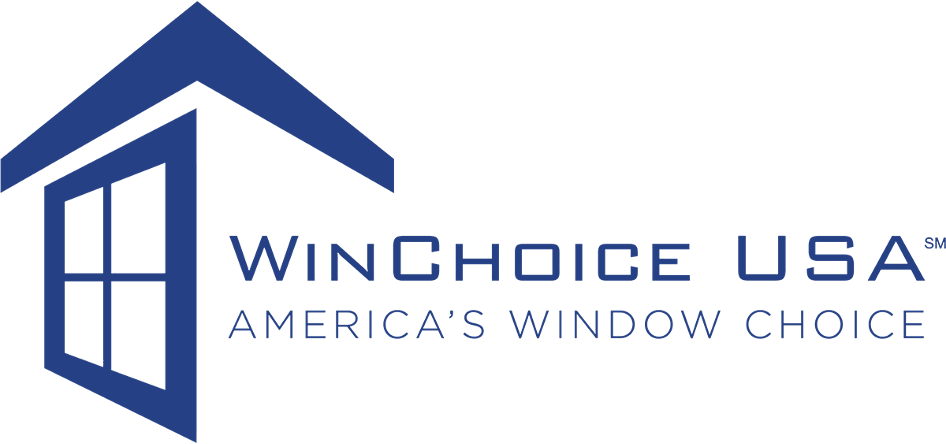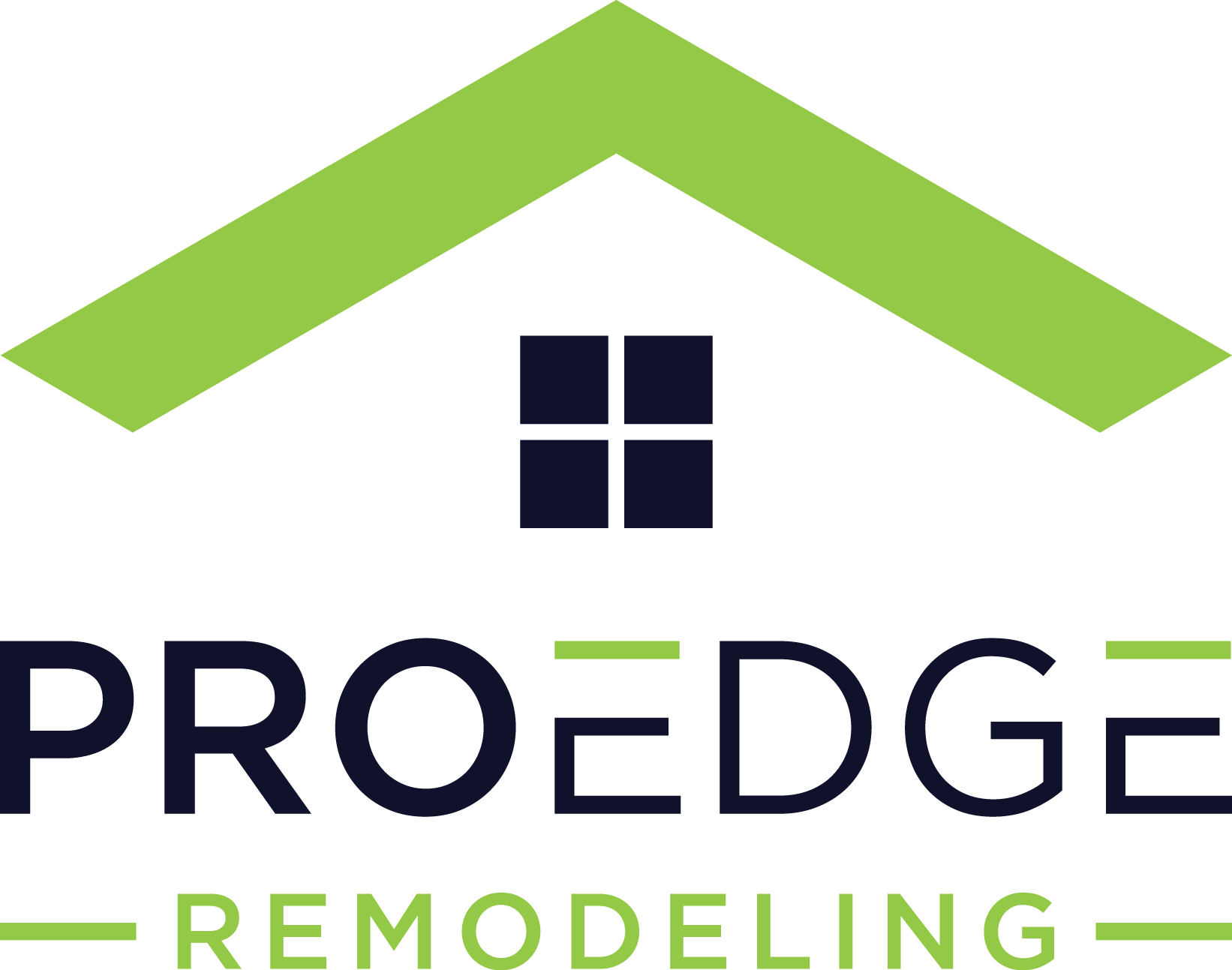First-Time Homebuyer’s Guide

Buying your first home is a huge milestone—but it’s also a major financial responsibility. Between the emotional highs of finding the perfect home and the realities of securing a mortgage, managing costs, and closing the deal, the process can feel overwhelming.
That’s why preparation is essential. Understanding your budget, credit health, mortgage options, and the long-term responsibilities of homeownership makes the experience far more manageable, and much less stressful.
Whether you’re still in the early planning stages or already house-hunting, this guide will help you avoid common mistakes, stay within budget, and feel well-prepared for every step of the journey.
Table of Contents
Assessing Your Financial Readiness
Before you begin house hunting, it’s important to evaluate your current financial situation. Mortgage lenders look at several factors when determining your eligibility, and knowing where you stand early on can help you prepare and plan more effectively.
Credit Score and Its Role in Mortgage Approval
Your credit score is one of the most important indicators of your creditworthiness. Most conventional lenders look for a minimum score of 620, though a higher score—particularly 740 or above—can help you qualify for better rates and loan terms.
Check Your Credit Report
Request your credit reports from all three major bureaus: Experian, Equifax, and TransUnion. You’re entitled to free copies annually from AnnualCreditReport.com. Review each report carefully for errors or outdated information that could affect your score.
How Much Can You Afford? Using the 28/36 Rule
The 28/36 rule is a common guideline used by lenders to determine how much you can safely borrow:
- 28% of your gross monthly income should be the maximum for housing-related costs (mortgage, property taxes, insurance, and HOA fees).
- 36% is the upper limit for total monthly debt obligations, including credit cards, car loans, student loans, and your mortgage.
Example: If your gross income is $6,000 per month:
- 28% = $1,680 maximum housing costs
- 36% = $2,160 maximum total debt payments
Saving for a Down Payment
While a 20% down payment is ideal to avoid private mortgage insurance (PMI), many first-time buyers qualify for loans with much lower minimums:
- Conventional loan: As low as 3%
- FHA loan: 3.5%
- VA or USDA loan: 0% down for eligible borrowers
Keep in mind: A smaller down payment often means higher monthly payments and may require mortgage insurance.
Understanding Additional Costs of Homeownership
Beyond the down payment, you’ll need to budget for several upfront and ongoing expenses:
- Closing costs: Usually 2% to 5% of the home’s purchase price. These cover loan origination fees, title services, taxes, and more.
- Property taxes: Vary widely by location and are typically included in your mortgage payment.
- Homeowners insurance: Required by lenders; the cost depends on coverage level and property location.
- Maintenance and repairs: Experts recommend setting aside 1% to 3% of your home’s value annually.
Understanding Mortgage Options
Choosing the right mortgage is one of the most important decisions you’ll make in the homebuying process. Each loan type comes with its own qualifications, benefits, and potential drawbacks. Understanding your options can help you make a confident decision that fits your financial goals.
Conventional Loans
A conventional loan is a mortgage that is not insured or guaranteed by the federal government. These loans are often best suited for borrowers with strong credit and a stable income.
- Minimum Down Payment: Typically 3% to 5%
- Credit Requirements: Generally 620 or higher; 740+ may yield better rates
- Private Mortgage Insurance (PMI): Required if down payment is less than 20%
- Pros: Competitive interest rates, flexible terms
- Cons: Stricter credit and income requirements
FHA Loans
Backed by the Federal Housing Administration, FHA loans are designed for borrowers with lower credit scores or limited savings.
- Minimum Down Payment: 3.5%
- Credit Requirements: Typically 580 or higher
- Mortgage Insurance: Required for the entire duration of the loan in most cases
- Pros: Easier qualification, low down payment
- Cons: Higher long-term costs due to mortgage insurance premiums
VA Loans
VA loans are available to eligible active-duty service members, veterans, and certain military spouses. These loans are backed by the U.S. Department of Veterans Affairs.
- Minimum Down Payment: None required
- Credit Requirements: Flexible; varies by lender
- Mortgage Insurance: Not required
- Pros: No down payment, no PMI, competitive interest rates
- Cons: Must meet military service requirements; funding fee applies
USDA Loans
USDA loans are offered to qualified borrowers purchasing homes in designated rural or suburban areas. These loans are backed by the U.S. Department of Agriculture.
- Minimum Down Payment: None required
- Credit Requirements: Generally 640 or higher
- Mortgage Insurance: Required in the form of upfront and annual fees
- Pros: 100% financing, reduced mortgage insurance costs
- Cons: Location restrictions, income limits apply
Fixed-Rate vs. Adjustable-Rate Mortgages (ARM)
When choosing a mortgage, one of the most important decisions is whether to opt for a fixed or adjustable interest rate. Both options have distinct advantages and risks, and the right choice depends on your financial goals, risk tolerance, and how long you plan to stay in the home.
Fixed-Rate Mortgage (FRM): The interest rate and monthly payment remain constant for the life of the loan. This option offers predictability and is popular among long-term homeowners.
Adjustable-Rate Mortgage (ARM): The interest rate is fixed for an initial period (e.g., 5 or 7 years) and then adjusts periodically based on market conditions.
- Pros of ARMs: Lower initial interest rates
- Cons of ARMs: Potential for significant rate increases over time
Example: A 5/1 ARM has a fixed rate for the first five years, after which the rate can adjust annually. If interest rates rise, your monthly payment could increase.
Getting Pre-Approved for a Mortgage
Pre-approval is an essential step in the homebuying process. It not only provides a realistic idea of what you can afford, but it also shows sellers that you are a serious and financially prepared buyer. A strong pre-approval can strengthen your offer in competitive markets.
Why Pre-Approval Matters
A mortgage pre-approval is a conditional offer from a lender to loan you a specified amount, based on a review of your finances. Unlike prequalification, which is an estimate based on self-reported information, pre-approval involves a formal evaluation of your credit, income, and debt.
Benefits of Pre-Approval:
- Establishes your price range before home shopping
- Signals credibility to sellers and real estate agents
- Helps identify potential credit or documentation issues early
Note: Pre-approval is not a loan guarantee. Final approval happens after you select a property and complete the underwriting process.
How to Compare Lenders and Rates
Different lenders offer different rates, fees, and loan products. Comparing multiple offers can save you thousands of dollars over the life of your loan.
When shopping for a mortgage, consider the following:
- Interest rate and APR: The annual percentage rate (APR) includes fees and gives a more complete picture of total loan cost.
- Origination fees: These are upfront charges for processing your loan application.
- Loan terms: Evaluate whether a 15-year, 20-year, or 30-year term best fits your financial goals.
- Customer service: Read reviews and check lender reputations for responsiveness and transparency.
Tip: Request Loan Estimates from at least three lenders. These standardized forms make side-by-side comparisons easier.
Documents Required for Pre-Approval
Lenders will ask for several documents to verify your financial information. Having these ready can speed up the process:
- Proof of income: Recent pay stubs, W-2s, or tax returns (especially for self-employed applicants)
- Proof of assets: Bank and investment account statements
- Credit history: Lenders will pull your credit report with your permission
- Debt information: Details on student loans, car loans, and other obligations
- Identification: Government-issued ID and Social Security number
Once the lender reviews your information and approves your application, you’ll receive a pre-approval letter, which typically remains valid for 60 to 90 days.
Finding the Right Home
Once you’re pre-approved, the next step is identifying the right property. This involves balancing your needs, budget, and lifestyle preferences.
Define Your Needs vs. Wants
Before touring properties, create a list of your non-negotiables and nice-to-haves. Being clear about your priorities helps you focus your search and avoid buyer’s remorse.
Examples of Must-Haves:
- Minimum number of bedrooms or bathrooms
- Commute distance to work or school
- Accessibility or mobility features
- Safety
Examples of Nice-to-Haves:
- Updated kitchen or appliances
- Extra garage space
- Outdoor entertaining area
- Walk-in closets
Researching Neighborhoods
Location is often considered the most important factor in real estate. A less-than-ideal home in a desirable area may be a better investment than the opposite.
Key factors to evaluate:
- School district ratings
- Crime rates
- Access to amenities
- Zoning and proposed development plans
Working With a Real Estate Agent
While you can search listings on your own, a licensed real estate agent offers expertise and negotiation skills that can streamline the process. In most cases, their commission is paid by the seller, not the buyer.
What a Buyer’s Agent Can Do:
- Identify listings that meet your criteria
- Arrange and accompany you on showings
- Provide insights on local market trends
- Help write and negotiate offers
- Coordinate with inspectors, lenders, and title companies
Choose an agent with local market knowledge and experience working with first-time buyers.
Types of Homes to Consider
Each home type has its pros and cons. Think about how much space, privacy, and maintenance you’re comfortable with before deciding.
- Single-family home: Offers the most privacy and space but requires full responsibility for maintenance and repairs.
- Condominium (Condo): Lower maintenance, as exterior work is handled by a homeowners association (HOA). Monthly HOA fees apply.
- Townhouse: A hybrid of a condo and a single-family home. Typically multi-floor with a small yard and shared walls.
- Multi-family home: A property with two to four units. Some buyers choose to live in one unit and rent out the others (also known as “house hacking”).
Making an Offer and Negotiating
Once you’ve found a home that fits your needs and budget, the next step is submitting an offer. Crafting a competitive offer involves understanding market conditions, evaluating the property’s value, and anticipating potential negotiations with the seller.
How to Determine a Competitive Offer
Start by reviewing recent comparable sales (“comps”) of similar properties in the same area. Your real estate agent can provide a comparative market analysis (CMA) that includes:
- Sales price of similar homes
- Price per square foot
- Days on market
- List-to-sale price ratios
Example: If comparable homes in the area are selling at or above asking price, a full-price or slightly higher offer may be necessary. In a slower market, you may have room to negotiate below the asking price.
Understanding Earnest Money Deposits
An earnest money deposit is a good-faith payment made when submitting an offer. It demonstrates your commitment to the purchase and is typically 1% to 3% of the purchase price.
- Held in escrow until closing
- Credited toward your down payment or closing costs
- May be forfeited if you break the contract without a valid contingency
Common Negotiation Tactics
Negotiating doesn’t stop at the price. Buyers and sellers often go back and forth over terms such as closing dates, repairs, and concessions.
Typical items to negotiate:
- Price adjustments after inspection
- Seller contributions to closing costs
- Requesting appliances or fixtures be included
- Extending or shortening the closing timeline
Your real estate agent will guide you through negotiations, making counteroffers as needed while protecting your interests.
When to Walk Away
Not every deal is worth pursuing. It’s important to recognize red flags that may justify backing out—even if you’ve already made an offer.
Valid reasons to walk away include:
- Major structural issues found during inspection
- Low appraisal that affects your financing
- Seller refuses to negotiate on repairs or price
- Title issues that can’t be resolved
Contingencies written into your purchase agreement—such as for financing, appraisal, or inspection—allow you to exit the deal without penalty under certain conditions.
Home Inspections and Appraisals
Before finalizing your home purchase, two critical evaluations typically take place: a home inspection and a home appraisal. These help ensure the property is both physically sound and priced appropriately—protecting you and your lender from costly surprises.
Why a Home Inspection Is Critical
A home inspection is a detailed evaluation of the property’s condition, performed by a licensed inspector. While not always required by lenders, inspections are highly recommended—especially for older or previously owned homes.
What Inspectors Evaluate:
- Roof and structural integrity
- Plumbing and electrical systems
- HVAC equipment
- Foundation and drainage
- Mold, pest, or water damage
After the inspection, you’ll receive a written report outlining any issues found. Depending on the results, you may choose to:
- Proceed as-is
- Request repairs
- Negotiate a price reduction or credit
- Walk away if the issues are significant (assuming an inspection contingency is in place)
What to Know About Appraisals
An appraisal is a lender-required evaluation of a home’s market value. It determines how much the lender is willing to finance based on comparable property sales and market trends.
Key Points:
- Conducted by a third-party licensed appraiser
- Typically ordered by the lender but paid for by the buyer
- Protects the lender from over-financing a property
If the Appraisal Comes in Low
A low appraisal can present financing challenges if it falls below the agreed-upon purchase price. In that case, your lender may only approve a loan based on the appraised value—not the full offer amount.
Options include:
- Renegotiating the price with the seller
- Making up the difference in cash
- Challenging the appraisal with supporting comps
- Cancelling the deal (if an appraisal contingency is included)
Example: If your offer is $300,000 but the appraisal comes in at $285,000, you may need to negotiate a $15,000 price reduction or bring that amount to the table in cash.
Repairs and Seller Concessions
Based on the inspection findings, buyers often request repairs or financial concessions from the seller. This may include:
- Fixing specific issues before closing
- Offering a credit toward closing costs
- Reducing the purchase price to offset repair costs
All negotiated changes should be documented through an addendum to the purchase agreement and signed by both parties.
The Closing Process
Closing is the final step in the homebuying journey. It’s when the legal and financial paperwork is completed, ownership is transferred, and you officially become a homeowner. This stage involves coordination among lenders, title companies, real estate professionals, and (in some cases) attorneys.
What Happens During Closing
Closing, also referred to as “settlement,” typically occurs at a title company, escrow office, or attorney’s office depending on your state.
Key participants may include:
- You (the buyer) and any co-borrowers
- The seller
- Real estate agents
- A closing agent or escrow officer
- A title company representative
During the closing meeting, you will:
- Review and sign legal documents (e.g., promissory note, deed of trust, closing disclosure)
- Provide any remaining funds due (typically via cashier’s check or wire transfer)
- Finalize insurance and escrow arrangements
- Receive the keys to your new home
Understanding the Closing Disclosure
At least three business days before closing, your lender is required to provide you with a Closing Disclosure (CD). This five-page document outlines the final terms of your mortgage loan.
Key information includes:
- Loan amount and interest rate
- Total monthly payments (principal, interest, taxes, insurance)
- Itemized closing costs
- Cash required to close
- Loan features such as prepayment penalties or balloon payments
Tip: Compare the Closing Disclosure to your original Loan Estimate. If you notice discrepancies, ask your lender for clarification immediately.
Paying Closing Costs
Closing costs generally range from 2% to 5% of the home’s purchase price and may include:
- Loan origination fees
- Appraisal fees
- Title insurance
- Government recording fees
- Prepaid taxes and homeowners insurance
- Escrow account setup
Example: On a $300,000 home, closing costs could total $6,000 to $15,000.
Buyers can sometimes negotiate to have the seller cover a portion of these costs as part of the offer.
What to Expect on Closing Day
Arrive prepared with:
- A valid photo ID
- Proof of homeowner’s insurance
- Your cashier’s check or proof of wire transfer
- Any additional documents your lender or closing agent requests
After all documents are signed and funds are transferred, the transaction is recorded, and you’ll receive the keys to your new home.
Moving Into Your New Home
Once the closing process is complete and you’ve received the keys, it’s time to move in. Transitioning from homebuyer to homeowner brings both excitement and new responsibilities. Proper planning can help make the move smoother and ensure that your home remains safe, functional, and comfortable.
Setting Up Essential Services
Before or immediately after moving in, arrange for key utilities and services to be transferred or activated:
- Electricity and gas
- Water and sewer
- Trash and recycling
- Internet and cable
- Home security systems
Contact service providers at least a week in advance to avoid disruptions. Don’t forget to update your address with the U.S. Postal Service, your bank, insurance providers, and any subscription services.
Budgeting for Move-In Expenses
In addition to your mortgage and closing costs, expect some upfront expenses as you furnish and settle into your new home.
Common move-in costs include:
- Furniture and appliances (washer/dryer, refrigerator, etc.)
- Curtains, blinds, or window treatments
- Cleaning supplies or professional deep-cleaning services
- Basic tools for minor repairs or assembly
- Safety upgrades (e.g., smoke detectors, locks, carbon monoxide alarms)
Tip: Prioritize necessities and create a plan to furnish and improve your home gradually to avoid overspending.
Understanding Ongoing Maintenance Responsibilities
Homeownership means you’re now responsible for the upkeep and repair of your property. Maintaining your home not only protects its value but also prevents small issues from turning into costly problems.
Key maintenance tasks include:
- Servicing your HVAC system seasonally
- Cleaning gutters and downspouts
- Testing smoke and carbon monoxide detectors
- Flushing water heaters annually
- Checking for plumbing leaks or roof damage
Establish a maintenance schedule and set aside a monthly budget to cover both routine and unexpected repairs.
First-Time Home Buyer Tips and Mistakes to Avoid
Many first-time buyers make avoidable mistakes that lead to stress, extra costs, or regret. Understanding these common missteps—and how to avoid them—can set you up for success.
Common Mistakes First-Time Buyers Make
1. Skipping the Home Inspection
Forgoing an inspection may save time or money upfront, but it can result in costly surprises later. Always get a professional inspection—even for new construction.
2. Overextending Your Budget
Just because you’re approved for a certain loan amount doesn’t mean you should spend it all. Stretching your budget can strain your finances and limit flexibility.
3. Making Large Purchases Before Closing
Avoid financing a new car, opening new credit cards, or making other large purchases before your mortgage closes. These actions can alter your credit profile and jeopardize your loan approval.
4. Ignoring Loan Terms and Fees
Failing to understand your loan’s interest rate, term, fees, or prepayment penalties can lead to financial strain down the line. Read all documents carefully and ask your lender questions.
5. Neglecting to Plan for Maintenance Costs
New homeowners often underestimate the cost of maintenance and repairs. Unlike renting, there’s no landlord to call—you’re responsible for everything from broken appliances to roof leaks.
Best Practices for First-Time Buyers
1. Stick to a Realistic Budget
Use the 28/36 rule as a guideline and include all recurring costs—mortgage, taxes, insurance, and maintenance—when setting your budget.
2. Build an Emergency Fund
Aim to have 3–6 months of living expenses saved up. This safety net can help you handle repairs or income changes without financial strain.
3. Keep Your Credit Stable
From pre-approval through closing, maintain low credit card balances and avoid taking on new debt. Lenders monitor your credit until the loan is finalized.
4. Work With Trusted Professionals
Choose a real estate agent, lender, and inspector with solid experience and good reviews. Their guidance is especially valuable for first-time buyers.
5. Think Long-Term
Consider how long you plan to stay in the home and whether it meets your future needs. Look at resale value, neighborhood trends, and lifestyle changes that could affect your decision.
Conclusion
Buying your first home doesn’t have to be overwhelming. By breaking the process into manageable steps—like checking your credit, understanding mortgage options, getting pre-approved, and setting a realistic budget—you can stay in control from start to finish.
As you begin searching for the right property, focus on what fits your current lifestyle and long-term goals. Don’t rush the process, and always work with professionals who can help you make informed choices along the way.
Once you’ve made an offer and move toward closing, take time to review every document, ask questions, and plan for the responsibilities that come with homeownership. With preparation, patience, and a solid plan, you’ll be well on your way to enjoying the benefits of owning your first home for years to come.
Additional Resources

Anna has over six years of experience in the home services and journalism industries and serves as the Content Manager at MyHomePros.com, specializing in making complex home improvement topics like HVAC, roofing, and plumbing accessible to all. With a bachelor’s degree in journalism from Auburn University, she excels in crafting localized, comprehensive guides that cater to homeowners’ unique needs. Living on both coasts of the United States has equipped her with a distinctive perspective, fueling her passion for turning any house into a cherished home through informed, personalized decision-making.








